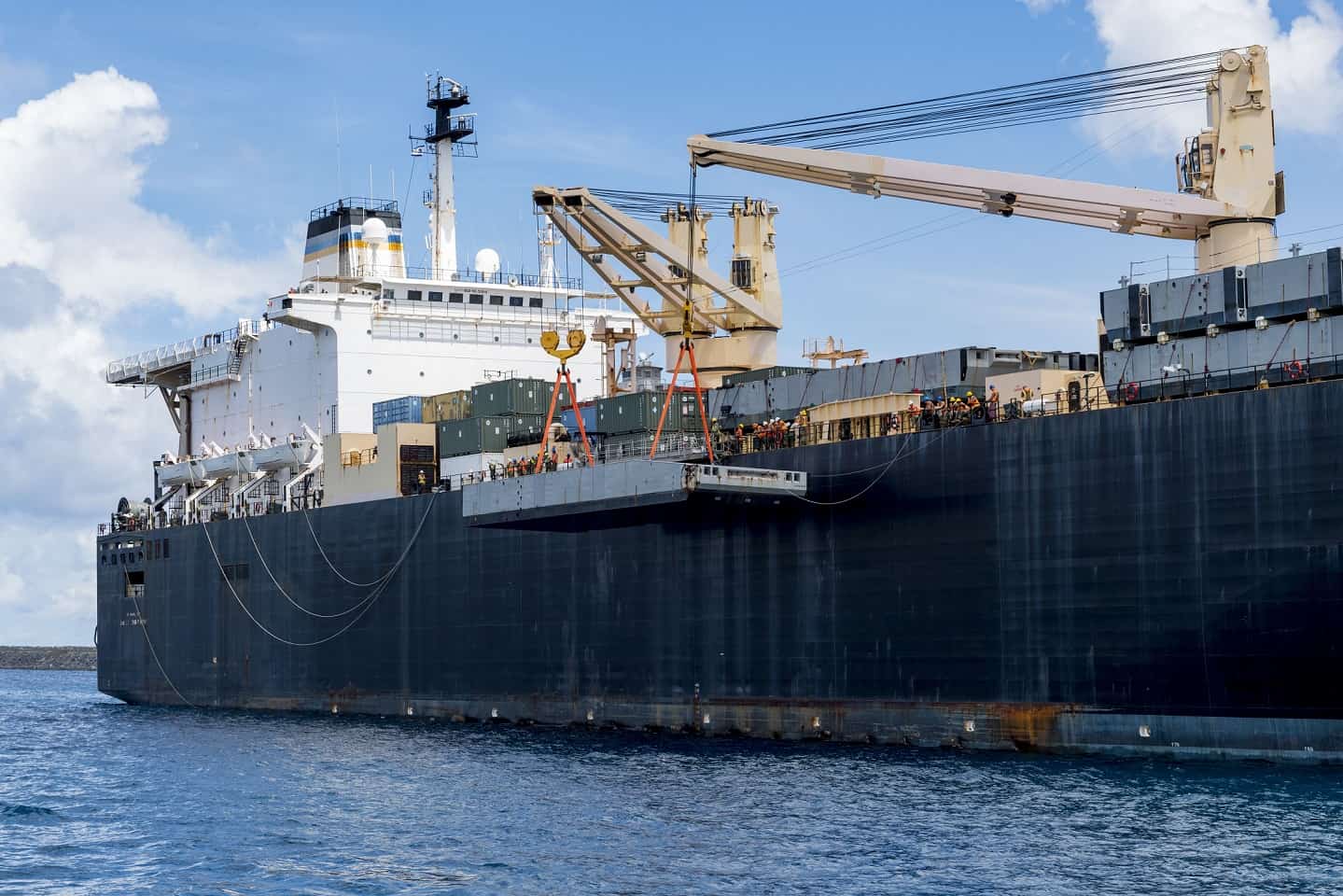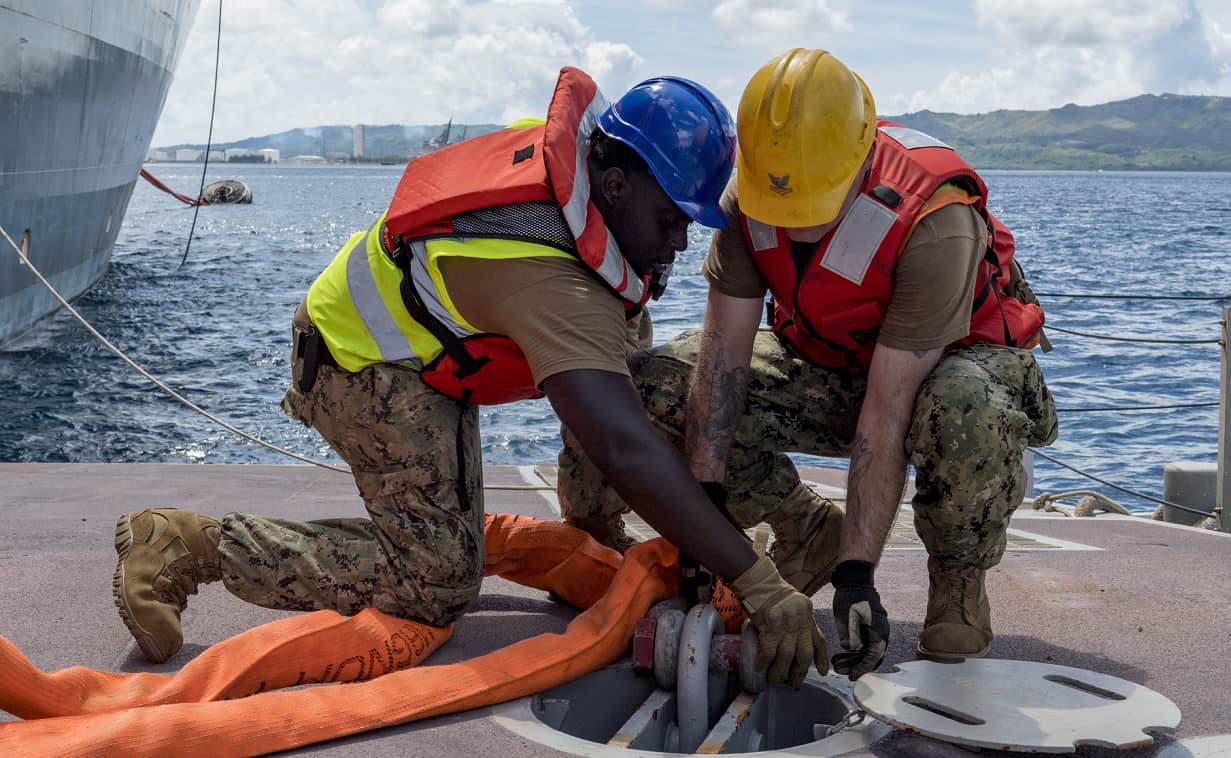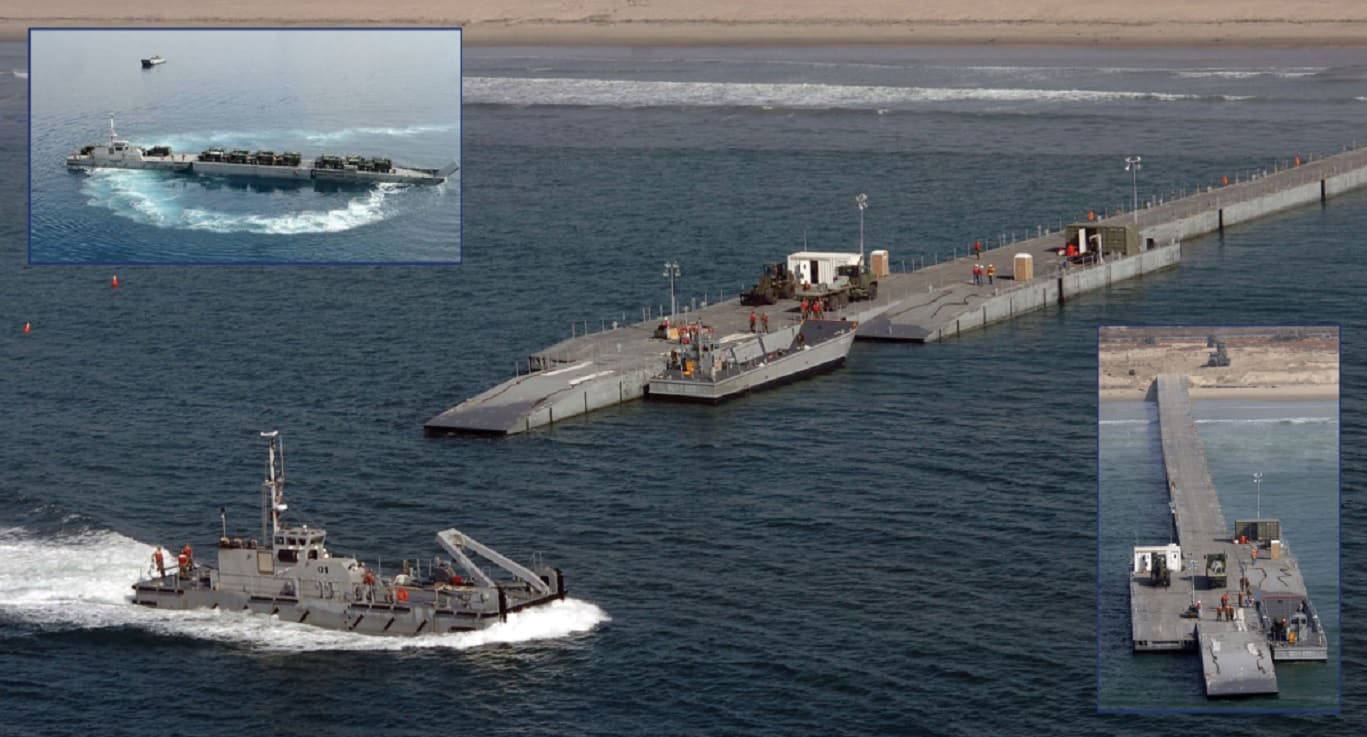U.S. Navy demonstrates “sea train” for discharge equipment and cargo
Posted on
The U.S. Navy has demonstrated the capability of the Improved Navy Lighterage System (INLS) or commonly known as “sea train”.
According to Mass Communication Specialist 1st Class John Philip Wagner, Jr., CTF 75 Public Affairs, Navy Cargo Handling Battalion (NCHB) 1, Assault Craft Unit (ACU) 1, Amphibious Construction Battalion (ACB) 1 and two reserve components from NCHB 5, and 13 joined forces to conduct joint Improved Navy Lighterage System (INLS) training on board the Military Sealift Command maritime prepositioning force ship USNS 2nd Lt. John P. Bobo (T-AK 3008), July 8 – 12.
INLS is a floating causeway system comprised of powered and non-powered floating platforms assembled from interchangeable modules used to transfer cargo and vehicles from sealift ships to shore areas where conventional port facilities may be damaged or inadequate or nonexistent.
“If feel this type of evolution is important because it brings all different kinds of commands together,” said Logistics Specialist 2nd Class Rachael Konefal, assigned to NCHB 1, a native of Philadelphia, Pennsylvania. “This is good training to have, NCHB is known for moving these lightereage systems which allows us to be able to get vehicles and equipment off the ship.”
Konefal added that these operations could not have been done without the other entities that make up NAVELSG and Naval Beach Group (NBG).
“This has been a great opportunity to be out here training with all these commands a working together as a team,” said Konefal.
Hull Technician 1st Class Daniel Billick, a native of Roseburg, Oregon, and a reservist assigned to NCHB 5 said, “It’s been great to come out and do something like this, as a reservist we don’t get a lot of opportunities to do this type of evolution.”
Billick added, “It’s been great to be able to work with the active duty sailors and work with other teams and gain some valuable training.”
INLS evolutions require a lot of coordination since it involves so many moving parts, people and equipment to accomplish the mission. Being able to come together and hash out proficiency as one team allowed these Sailors a chance to hone in on skills critical to supporting any type of contingency within the Indo-Pacific that would require immediate placement of supplies and cargo. Billick added that while there’s always a potential for things to not go as planned, every second allotted together is a second that everyone has to learn and develop proficiency in these types of evolutions.
“We did have a few things that didn’t go as we planned but it allowed the teams to come together and learn from the situations and still accomplish the mission,” said Billick.
“I feel that the evolution went pretty well from a training aspect,” said Konefal. “There were a lot of Sailors that were participating in an under-instruction capacity allowing them to see many different parts of the evolution which made it a little challenging, but with every challenge we were able to train each other to be able to prevent the same situation down the line.”
The integration of Cargo Handling Battalion (NCHB) 1, Navy Expeditionary Logistics Support Group (NAVELSG), Naval Beach Group (NBG) 1, and Maritime Prepositioning Ships Squadron (MPSRON) 3 for Improved Navy Lighterage System (INLS) Lift on Lift Off (LOLO) and lighterage operations increases Maritime Prepositioning Force (MPF) interoperability, proficiency and theater familiarization in support of any contingency in the Indo-Pacific.



Subscribe to our newsletter
Promotions, new products and sales. Directly to your inbox.
